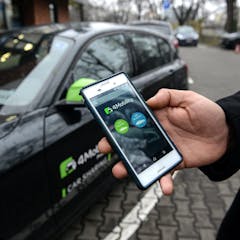
Articles on Commuting
Displaying 41 - 60 of 74 articles

There is a wide problem with the way society talks about gender equality.

In the election bidding wars, parties commit billions to transport projects, often before all the work needed to justify these has been done. More cost-effective alternatives hardly get a look-in.

Urban growth has had much less impact on commuting distances and times than media reports would suggest. The explanations include jobs being widely dispersed and residents’ adaptable decision-making.

Busting congestion requires some creativity - and evidence-based methods. Here are four of these.

What’s your risk of dying if you cycle to work, versus the health benefits? What about walking, or driving, or catching a train? Here are the risks and benefits.

We see the daily commute as a waste of time. But there’s another way to see the experience: a whole life in the events and memories we form during these journeys, which change us as human beings.

Urban planners often hope bike-share schemes might reduce reliance on cars and help with congestion. But very few of those who use share bikes have switched from driving.

Daily routine affects how much polluted air we breathe.

In Sydney, a ‘latte line’, that runs from the airport to Parramatta and up to the northwest, divides white-collar jobs from blue-collar jobs. This perpetuates inequality.

Even using public transport is better for your health than travelling by car.

We spend on average about an hour a day travelling. Given this is unlikely to change, how can we make this time more productive and enjoyable?

A comparison of Australian cities reveals cyclists and walkers are still very much a minority of commuters, despite the economic, health and environmental costs. Action on three fronts is needed.

We constantly use electronic devices to distract ourselves from the tedium associated with waiting. Yet being bored can be a creative activity.

The evidence suggests a small investment in cycling infrastructure, combined with less punitive policing, would enable more Australians to escape daily traffic congestion.

For Melbourne drivers who comfort themselves with the thought that traffic congestion is worse in Sydney, sorry but new analysis shows overall delays are similar, but some commutes are especially bad.

All it takes is data … lots of data.

Pedal to the office and your risk of an early death drop by over 40%.

Think you couldn’t possibly do without your car? There are more options than you might think.

Regions that offer adquate amenities for residents have the best chance of converting long-distance commuters into the sort of new residents who can sustain regional prosperity.

Roads versus public transport: for decades, these have been the battle lines in debates over transport in our cities. But a revolution in mobility is under way that will transform our thinking.
